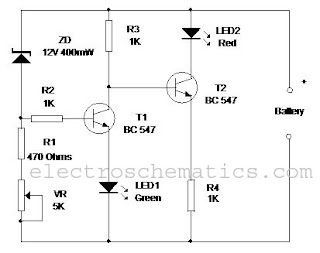Treatment LCD monitor
Jumat, 29 April 2011 by skemarangkaian
Home » Archives for April 2011
Jumat, 29 April 2011 by skemarangkaian
Posted in: Television | | |
by skemarangkaian
Posted in: Audio | | |
by skemarangkaian
 |
| Video Amplifier Circuit Diagrams |
Posted in: Power amplifier | | |
by skemarangkaian
Amplifier circuit here is all based on the ic in the gains. Three IC TA7230P, TA7236P, TA7237AP is intregated circuit (IC) which was applied to the power amplifier. Each IC has a different output, different input voltage, all IC TA7230P, TA7236P, TA7237AP is manufactured by Toshiba.
TA7230P, TA7236P, TA7237AP amplifier schematic |
Posted in: Car amplifier | | |
by skemarangkaian
 |
| TA7230P, TA7236P, TA7237AP amplifier schematic |
Posted in: Audio, ICs audio amplifier | | |
Kamis, 28 April 2011 by skemarangkaian
Overview of IC LM2917 as Frequency to Voltage Converter
 Very easy to apply in measuring the output frequency with the formulation of single-chip Frequency to Voltage Converter VOUT = FIN x VCC x R1 x C1. Then the single-chip LM2917 Frequency to Voltage Converter This configuration requires only the RC only in frequncy doublings. And has an internal zener regulator to aimlessly accuracy and stability in frequency-to-voltage conversion process.
Very easy to apply in measuring the output frequency with the formulation of single-chip Frequency to Voltage Converter VOUT = FIN x VCC x R1 x C1. Then the single-chip LM2917 Frequency to Voltage Converter This configuration requires only the RC only in frequncy doublings. And has an internal zener regulator to aimlessly accuracy and stability in frequency-to-voltage conversion process. |
| Frequency to Voltage Converter |
Posted in: Signal | | |
by skemarangkaian
Rabu, 27 April 2011 by skemarangkaian
Car Amplifier Care Tips
Posted in: Audio, Power amplifier | | |
by skemarangkaian
Posted in: Audio, Power amplifier | | |
by skemarangkaian
 |
| Humidity Sensors Diagram Block |
Posted in: Sensor | | |
by skemarangkaian
 |
| Universal PIC programmer circuit diagram |
Posted in: Microcontrol | | |
by skemarangkaian
 |
| Solid State Relay Circuit Diagram |
Posted in: Microcontrol, Switch | | |
Selasa, 26 April 2011 by skemarangkaian
 |
| Circuit Diagram |
Posted in: Lights | | |
by skemarangkaian
Posted in: Audio, Component's, ICs audio amplifier, Power amplifier | | |
by skemarangkaian
 |
| Battery Level Monitor Circuit Diagram |
Posted in: Indicator | | |
by skemarangkaian
 |
| Accelerator sensor with MMA 3201 |
Posted in: Sensor | | |
by skemarangkaian
Posted in: Component's, Sensor | | |
by skemarangkaian
 |
| CMPS03 Circuit Diagram |
Posted in: Sensor | | |
by skemarangkaian
Posted in: Indicator | | |
by skemarangkaian
Posted in: Sensor | | |
by skemarangkaian
 |
| Metal Detector Circuit |
Posted in: Sensor | | |
by skemarangkaian
 |
| figure.1 DAC With MCS5 Microcontroller |
Posted in: Microcontrol | | |
by skemarangkaian
 |
| Digital Thermometer Circuit Diagram |
by skemarangkaian
 |
| Temperature and humidity sensor |
Posted in: Component's, Sensor | | |
Senin, 25 April 2011 by skemarangkaian
 |
| Oscillator Colpitts |
Posted in: Signal | | |
by skemarangkaian
Amplifier for Paralelling Headphone |
 |
| Paralel Headphone Wiring Diagram |
by skemarangkaian
by skemarangkaian
Posted in: Signal | | |
by skemarangkaian
 |
| Low Pass Filter Basic Circuit |
Posted in: Signal | | |
by skemarangkaian
 |
| Astabil Multivibrator circuit |
Posted in: Signal | | |
by skemarangkaian
 |
| AM Transmitter Schematics |
 |
| AM Received Schematics |
Copyright 2011 | All Rights Reserved